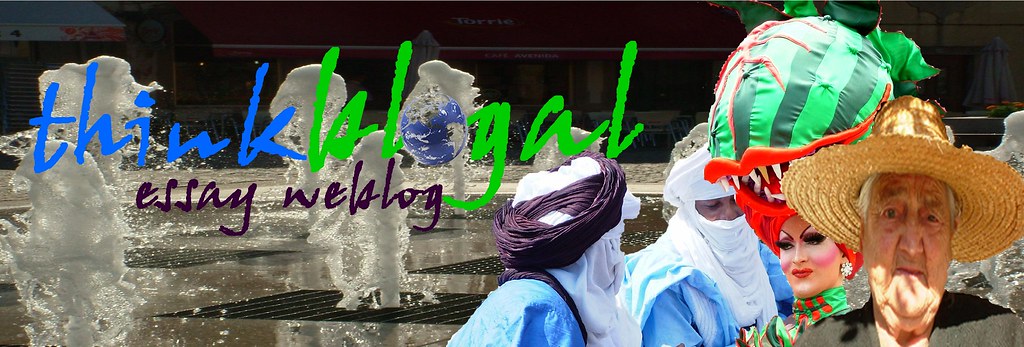The Village by M.J. Ferreira
M. Night Shymalan’s film The Village (see also in IMDb.com) is a monument to the human ability to culturally produce meanings through words and images. It is one of those rare motion pictures where nothing is said in vain, no word is misplaced, no gesture is out of order, and no dialogue is meaningless. The script of the film was carefully thought to show how political communities, and mostly the political authorities within them, socially construct fear and, by the management of such terror, socially construct the boundaries that divide people.
The Village is mostly about fear and about boundaries: human boundaries and their translation into physical limits that, by a political inducement of mistrust, prevent people from moving throughout them. It tells a story: a story about a group of North American men and women that, being weary of the violence and bloodshed in big cities, decide to establish a small community within a territory surrounded by woods. There, they start a life without the modern commodities, where there is no money, no outside contact, and foremost supposedly no men-made sorrows. When the ‘founding fathers’ swear never to go back and to keep the young generations from leaving, they also tell a story. And it is then that The Village becomes a story about a story. The elderly tell their youngsters that there are monsters in the woods (“those we don’t speak of”), killing those who cross the visibly established boundaries between the village and the forest. To make their story look credible, the elderly dress like the monsters, impersonate their sounds and mainly create rituals destined at keeping the invented beings away from the village’s boundaries, so that the inside and outside environments are highly securitised. The existence of ‘monsters’ in the woods becomes the ‘Truth’. Terror, borders and belonging are created and managed and exist interdependently.
The message is clear: all political communities constrained within borders are politically controlled by elites that have the resources, the instruments and the authority to create ‘Truths’, to tell stories, to make up ‘monsters’ that induce people to behave in certain ‘normal’ ways and, above all, to designate who belongs to the community and who is a stranger, who is innocent and who is guilty, what is wrong and what is right. Curiously enough, it is the same people who voluntarily entrust political elites to assure justice and order who are 'victimized' by the most dangerous kind of tyranny: mental. When a power, even if democratically elected, has the faculty to direct the minds, the emotions and the behaviour of their citizens, mostly by the reification and the construction of social concepts, democracy becomes an empty model. Tocqueville knew this all too well. The situation gets worse when political leaders, legitimised by their communities, trade-off justice for order. The latter is maintained through unquestioned securitisation processes. In the film, the main characters live a dilemma: to maintain order, reifying their lye, or to assure justice, questioning the grounds on which the community has been established.
The Village is above all a politically and socially engaged critique to the path that Western democracies are currently undertaking. Since 9/11, and mostly on behalf of the so-called fight against terrorism, the international and domestic political environments are becoming extremely securitised. Religious, cultural and social differences are condemned and migrants are being nominated as the ‘enemy’, a danger to be avoided. Migrants are those who do not belong to our ‘village’, and are becoming ‘those we don’t speak of’. In the social realm, Western societies are becoming silent, ‘normalised’ through a series of practices and rituals intended at creating a certain kind of unquestioned political identity and citizenship. Mental domination is becoming real. People do not want to leave their ‘mental villages’ because they are afraid to find some hidden ‘monster’. The same ‘monster’ from the lie the elderly told their youngsters to keep them from leaving the community. We prefer to believe in the ‘stories’ that are told to us. Risk, justice and liberty are fading away from our political and social vocabulary. Many, just like the characters in The Village, think that, by isolation and erasure of differences, they can escape men-made grief. As if sorrow and evil were not, at the same time, reasonable and unreasonable human creations that live inside each one of us. In The Village, it is quite interesting, although not surprising, that the main female character, the one that unveils the ‘Truth’, is a blind woman, and that her sorrow is caused by the acts of a psychologically disabled human being.
Life is what we make of it. Time is what we make of it. There is no ‘Truth’ apart from human creation. The entire social world is constructed. That is why we have to decide what to do with the time, which has been given to us and, for better and worse, with the free judgement that comes along.














<< Home